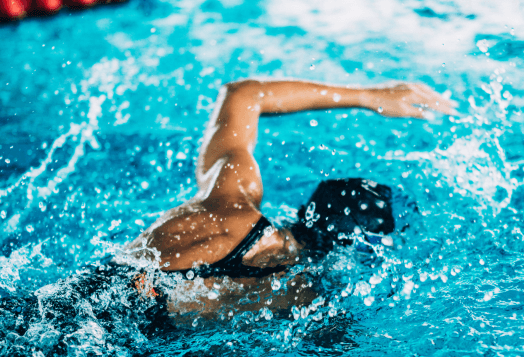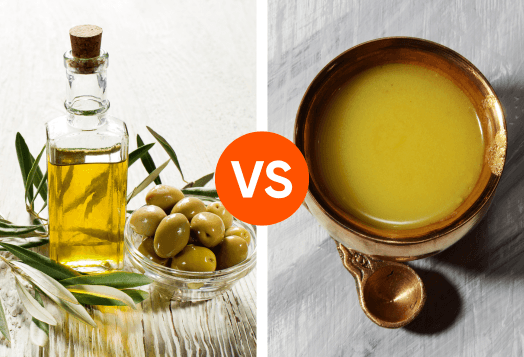
Priya had one goal this summer: to shed a few extra pounds and feel fitter. She wasn’t a big fan of strict diets, so she decided to focus on workouts. The big question? Should she join the gym or start swimming?
Instead of picking dumbbells or swimming for weight loss straight away, she gave herself a week to try both.
Quick fact: In her week-long test, swimming burned about 100 more calories per session than the gym, and felt easier on her joints. Keep reading to see exactly how each day went and why one option kept her coming back for more.
Day 1 – Gym Session (Cardio Focus)
Priya kicked off her week with a 45-minute gym workout:
Warm-up: 10 minutes on the treadmill (light jog).
Cardio: 15 minutes of cycling.
Finisher: 20 minutes on the elliptical.
Why it works: Cardio workouts in the gym can burn anywhere between 300–500 calories, depending on intensity, and they improve stamina over time.
Calories burned: ~400
How she felt: Sweaty and accomplished, but a bit bored during the last few minutes.
Challenge: Waiting for a free treadmill during peak hours.
Day 2 – Swimming Session (Freestyle & Backstroke)
The next day, she switched to the pool for 45 minutes.
Warm-up: 5 minutes easy laps.
Main set: Alternating freestyle and backstroke for 30 minutes to build stamina for swimming.
Cool down: Gentle floating and slow laps.
Why it works: Swimming is a low-impact, full-body exercise that targets multiple muscle groups while also building endurance.
Calories burned: ~500
How she felt: Refreshed and surprisingly hungry afterwards (yes, swimming does that).
Bonus: It didn’t feel like ‘working out’, more like a relaxing activity.
Day 3 – Gym Session (Strength Training)
This time, Priya focused on weights:
Squats, lunges, and leg presses for the lower body.
Dumbbell curls and shoulder presses for the upper body.
Core exercises like planks and Russian twists.
Why it works: Strength training helps build lean muscle, which boosts metabolism and helps you burn more calories even at rest.
Calories burned: ~350
How she felt: Stronger, but her muscles were sore the next morning.
Challenge: Needed guidance to use some machines correctly.
Day 4 – Swimming Session (Water Aerobics + Laps)
Priya decided to mix things up with a water aerobics class followed by laps.
Main moves: Leg kicks, underwater jogging, and arm pulls.
Finish: 10 laps freestyle at a steady pace.
Why it works: Water adds resistance, so even simple movements engage your muscles more, without stressing your joints.
Calories burned: ~480
How she felt: Relaxed, energised, and not at all sore the next day.
Calorie Burn: Swimming vs Gym
Activity | Calories Burned (45 mins, moderate effort) | Impact on Joints | Fun Factor |
Swimming | ~480–500 | Low | Refreshing |
Gym Cardio | ~350–400 | Medium | Energetic |
Strength Training | ~300–350 | Medium - High | Structured |
Days 5–7 – The Pattern Emerges
By the end of the week, Priya had a clear picture:
Swimming burns slightly more calories in the same time.
It was easier on her joints and muscles, so she could go longer without feeling drained.
She genuinely looked forward to swimming days.
The gym still had its advantages, more control over muscle building and targeted training, but swimming felt like something she could sustain for months without losing interest.
Swimming vs. Gym: Quick Pros & Cons Table
Factor | Swimming | Gym |
Calorie Burn (per 30 mins) | 250–300 (moderate pace) | 150–200 (moderate lifting) |
Muscle Building | Builds lean muscle, especially the upper body and core | Builds targeted muscle mass |
Joint Impact | Low impact, easy on knees & back | Medium to high impact, depending on exercises |
Cost | May require pool membership or facility access best supported by expert swimming coaches | Gym memberships can vary widely |
Convenience | Requires swim gear, changing time | Easier to fit into short breaks |
Fun Factor | Relaxing, meditative, and refreshing | Energetic, motivational atmosphere |
Myth-Busting: Swimming vs. Gym
“Swimming doesn’t build muscle.”
Not true. While it won’t bulk you up like heavy lifting, swimming builds lean, toned muscle, especially in the shoulders, back, and core, thanks to water resistance. Different strokes target different muscle groups, making it a full-body strength workout in disguise.“The gym is always more effective for weight loss.”
Not necessarily. Swimming can burn more calories per minute than many gym routines, especially if done at a vigorous pace, and it engages the whole body, meaning more muscles are working, and more calories are burned.“You can’t improve strength without lifting weights.”
False. Swimming uses the natural resistance of water, which is about 800 times denser than air, to challenge muscles. Pushing against this resistance with every stroke helps improve strength and endurance without heavy loads.“Cardio in the gym is better than swimming for heart health.”
Both are excellent for cardiovascular fitness, but swimming has the added advantage of improving lung capacity, breath control, and circulation because you’re working in a horizontal position and often holding your breath.“Swimming is only for summer or warm weather.”
Nope. Indoor heated pools make swimming a year-round option, and many professional swimmers train in colder water to boost calorie burn and stamina.
What’s Better for Weight Loss?
For Priya, swimming ticked all the boxes: full-body workout, calorie burn, joint-friendly, and fun. It didn’t just help her lose weight; it kept her motivated.
That said, here’s the practical takeaway for anyone deciding:
- Choose swimming if you want a low-impact workout, enjoy water, and prefer exercise that feels playful, especially when compared in a swimming vs running showdown.
Choose the gym if you want structured, equipment-based training and a balance of cardio and strength work.
Or do both — alternate between swimming and gym to keep your routine fresh and balanced.
The best workout is the one you enjoy enough to stick with. Whether it’s diving into the pool or hitting the weights, consistency will always beat perfection.
Disclaimer: This article is based on a personal experience and general fitness information. Calorie burn and results may vary depending on individual weight, intensity, fitness level, and overall lifestyle. Always consult a certified fitness trainer or healthcare professional before starting a new workout routine.




